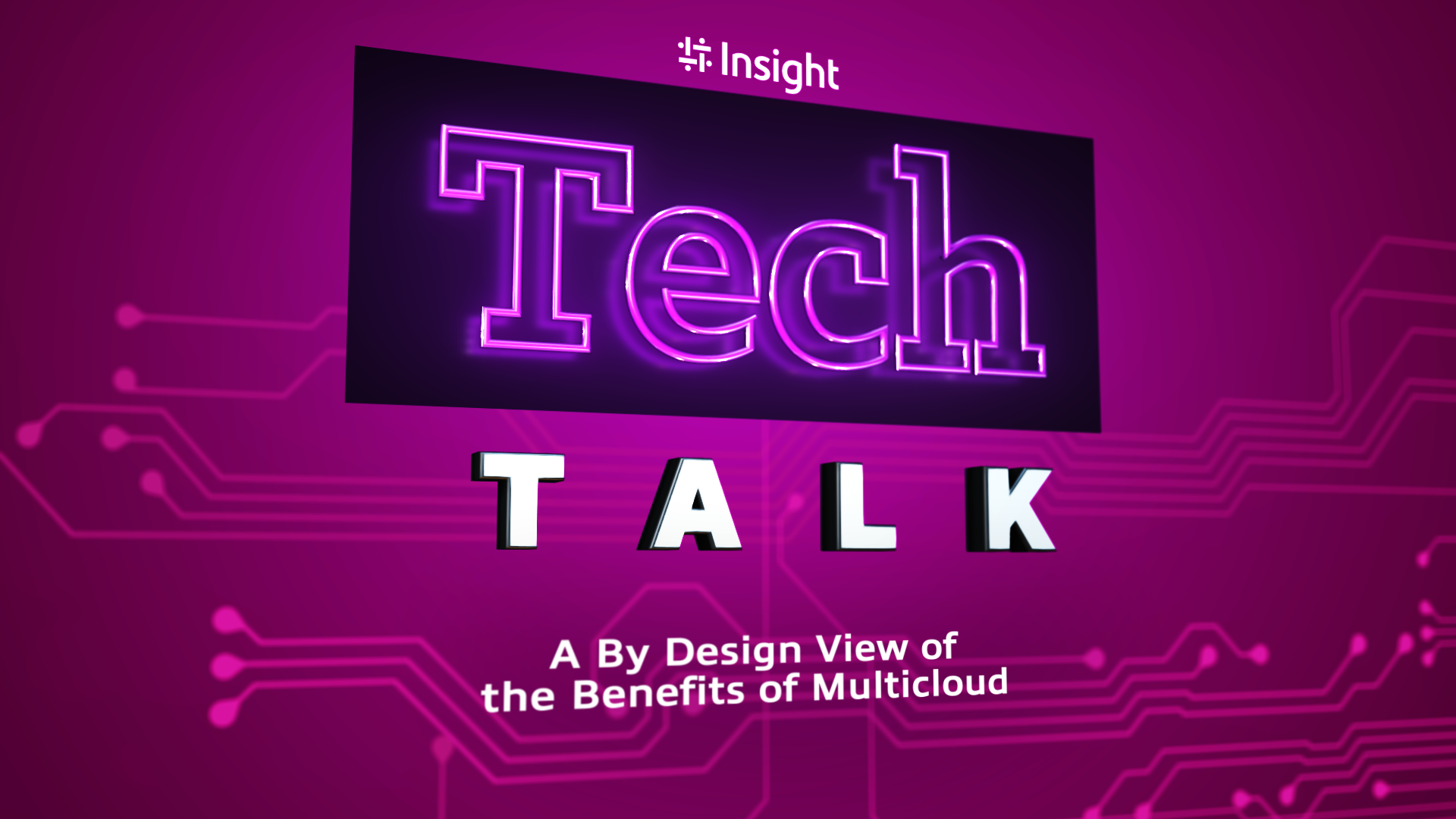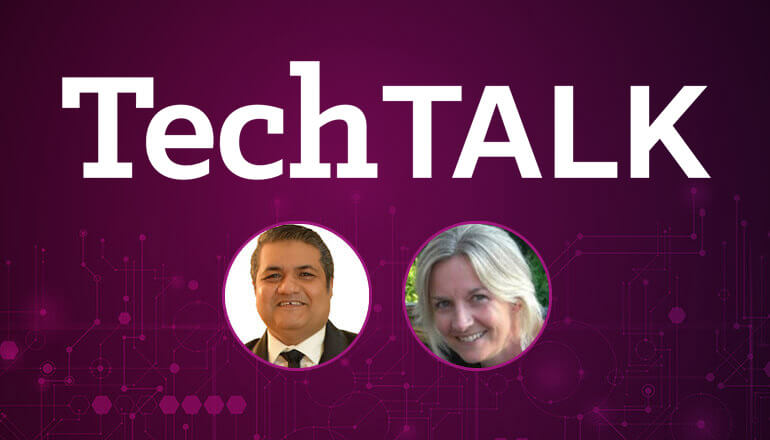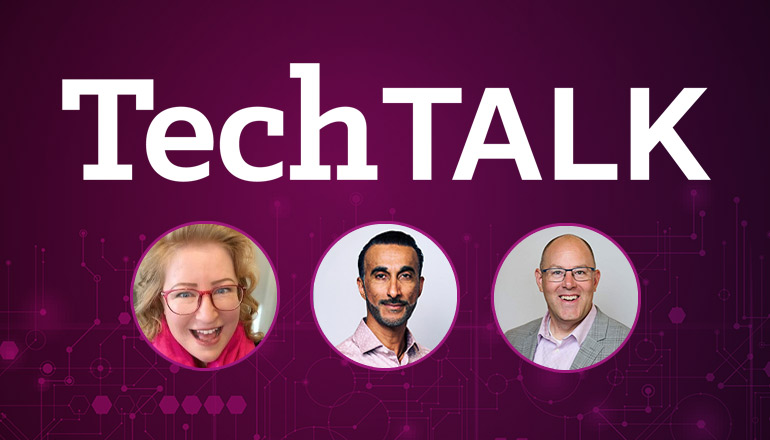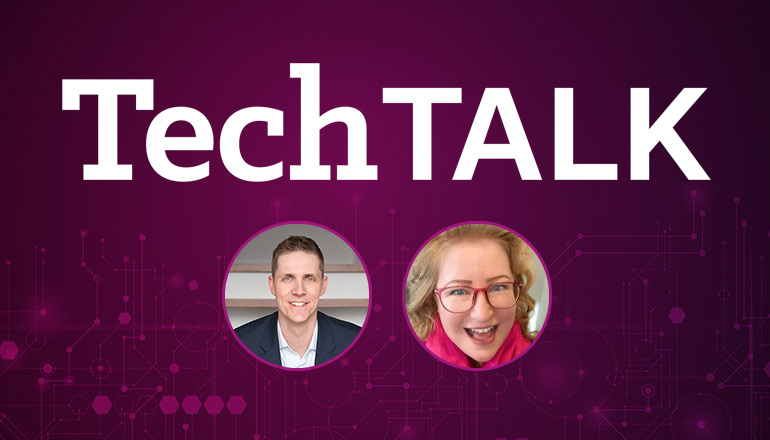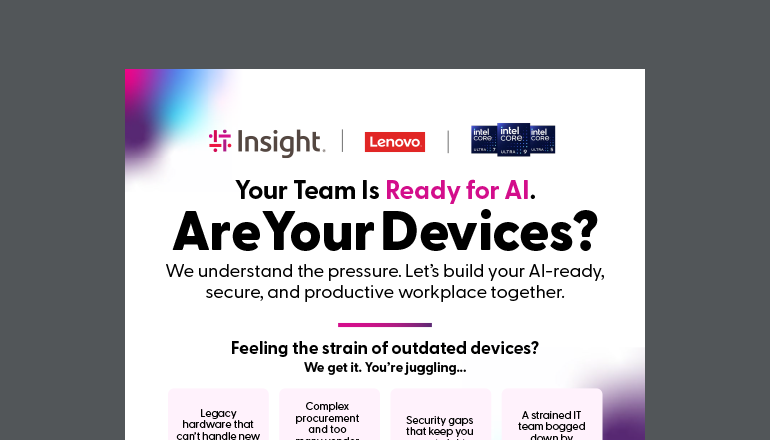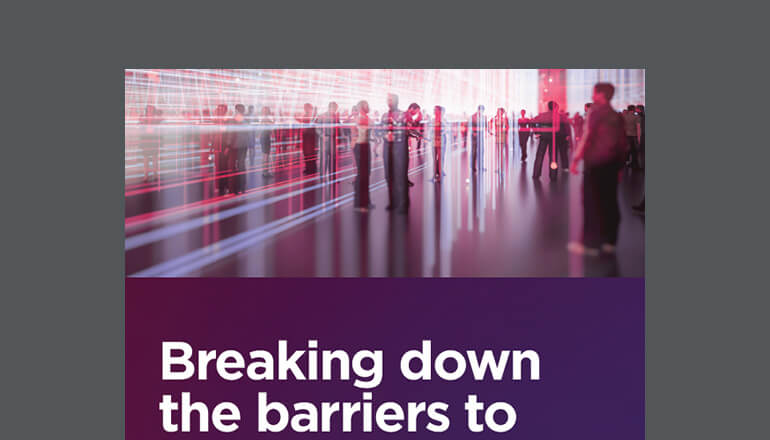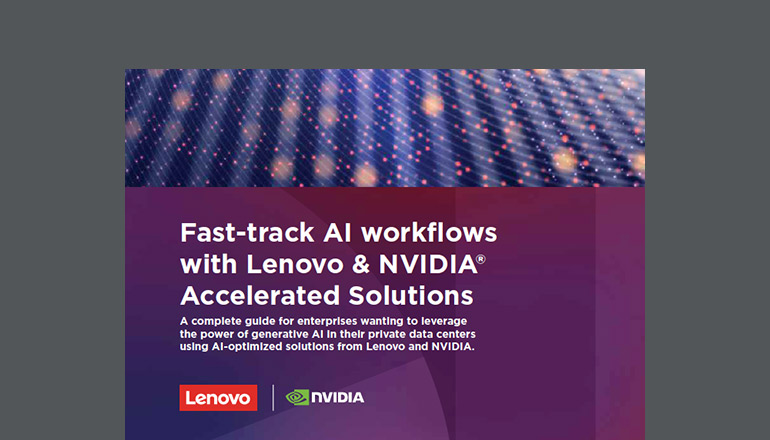Transcript of audio:
TechTalk | A By-Design View of the Benefits of Multicloud
With Jeffrey Denberg, Dell
[JOHN]
Hello and welcome to Insight's Tech Talk the show where we invite our partners to talk to our clients about the trends that they're seeing in technology area. Today I'm very happy to have Jeffrey Denberg with us. Jeffrey is the vice president of Enterprise Sales for Dell Technologies Canada. Welcome, Jeffrey.
[JEFFREY]
Hey John, thanks a lot for having me. Really appreciate the time.
[JOHN]
Good to see you again. There's so much going on in our world these days. I want to jump into it. We've got about 10 minutes, and this goes pretty fast. Everything we're hearing these days is about cloud, cloud, cloud and more cloud, and we've seen that accelerate through the pandemic and for various reasons. But I think today what's really important to talk to our clients about is the importance of hybrid cloud. And so maybe at the high level, your personal view or Dell's view on the importance of hybrid cloud.
[JEFFREY]
Absolutely, and hybrid really, what I'll term multicloud. Hybrid I think implies two and multi-cloud implies many and I think that's what we'll talk about is that there's many kind of instantiations of cloud and we'll get into that. So first of all, thanks a lot for having me. I really appreciate the support of you and the Insight team with Dell overall. So thank you very much for that. Probably the best place to start is to kind of set the stage with the market and challenges. So everybody knows that data is growing and becoming more distributed, especially now that organizations are starting to look at the power of the edge. Edge data is growing exponentially. What we see is about 23% growth compounded over the next five years in data being created and used at the Edge. And when you think about the power of that, all of that data tends to turn into new workloads and feeds new applications. And that power is immense for organizations to try and embrace.
[JOHN]
Pause for one sec just to make sure everybody's clear. Because I think people have different opinions. When you talk about edge, specifically where do you mean by there?
[JEFFREY]
Anything outside of that core data centre. So it could be a remote location, it could be a retail store, it could be the top of a building somewhere, it could be a lamp post. It could be your laptop, your 5G enabled laptop. Those are all edge devices because it's sitting at the edge of the network outside of your corporate core data centres.
[JOHN]
Got it. So the concept here is that we need to do a certain level of compute and compilation at the edge because we can't physically bring everything back to the data centre.
[JEFFREY]
Absolutely, and when you think about, again, the power of the edge. So look at a hospital for example, that has to make real-time queries and applications at the patient's bedside, or even further one of the examples I love is if you're in a self-driving car, a Tesla, for example, that engine in there has to get data quickly from whether it's a sign, whether it's from a network device, whether it's from some indication of something going to happen on the road. You don't want that latency to happen by the path going from that car all the way to a big, large data centre somewhere. You want it to happen quickly at the point of impact for lack of a better term, shouldn't use that with a car, but for lack of a better term. So closing that gap in data and having the power at the edge closer to the where you need it again that point of impact is really, really important.
[JOHN]
Got it. Go ahead.
[JEFFREY]
So I was going to say, if you look at kind of edge and the power it's not just about how we can help customers run edge in the cloud or using a cloud initiation, but more than 50% of the new IT infra that we see being purchased is going to be deployed at the edge. And it just really underscores the amount of data and the opportunities around that data. They are absolutely a mess. I mean, it is a game-changer for a lot of organizations bringing the data closer to the constituents and the ability then to make sense and to almost monetize that data again, at that point of impact. Really, really important.
[JOHN]
Well, what you're really demonstrating to me is I've heard for years that the edge many believe will be the largest cloud. And you're really supporting that. Because if that's where the bulk of the data is, that's where the volume is.
[JEFFREY]
Absolutely, the majority of companies that you and I talk to today are already in some instantiation of multi-cloud. They've got workloads that are sitting in one of the hyperscalers, they've got a maybe a private cloud on site maybe they're using a colo provider to be cloud-adjacent. So they already are hybrid or multicloud. But what we're really seeing is that there's a financial change in the industry as well that is really dictating this move to be more cloud-like both in the economic view. How they want to pay for it CapEx versus OpEx or OpEx versus CapEx and then how they want to manage capacity. I think gone are the days of organizations going and spending hundreds of millions of dollars of infrastructure that is going to sit in their data centre and not achieve a quick time to value because of the fact that you've got a sense of over provisioning. Why can't people just buy the technology that they need? Why aren't they able to kind of spin it up when the business demands say so? Why can't they spin it down when the business demands say so? All of these are reasons why it can't just be one over the other. And everybody has to really look at a by-design view of how multicloud works taking into account all of the different parameters that we're talking about today.
[JOHN]
The other piece that I consider is we talk about the war on talent or the shortage of skills that is out there and one of the things that leveraging multitenant cloud infrastructure does is it allows people to not have to worry about the people that operate that. Their scarcity of IT resources can focus on things that move the needle for the business not necessarily operating the infrastructure.
[JEFFREY]
Absolutely, you mean that skills gap that we're facing right now is a huge impact to this. And if you look at what we're doing with something like Dell APEX, which I'm going to talk about in a minute, it's really about offloading the day-to-day infrastructure management. Providing operations as a service and freeing up those resources that are focused on tech lifecycle and providing more of that consistency and experience across all clouds. So that the experience you have with an AWS or a GCP or an Azure is mirrored with the experience that you're having with your applications and your infrastructure that's sitting on prem. Why should there be different views? One view, one control panel, one ability to kind of look at your resources, to look at your infrastructure and your applications and workloads wherever it sits and give that easier operation element to your team so they could focus on really running the business versus running infrastructure stacks.
[JOHN]
It's interesting Jeffrey that's the very reason we're seeing such explosive growth in our managed services business. One of the areas is if you attract the talent that will build the environment, they're not likely to be the kind of people that want to operate it on Day 2. So people are looking to solution integrators like Insight, so that we can have the skills to do those one-time events and then do the operational skills as well. And like you just said, their folks can focus on things that really move the needle for their business.
[JEFFREY]
Absolutely and it again, it gives that consistency of experience and operation so that as business demands change and as an organization's technology team has to pivot, it becomes much easier to do that. And look neither on-prem nor cloud is perfect. In public cloud you have a lot of pain points such as, for example security and controls. Lack of security around the data and lack of control to administer or operate which is really the Number One reason that people will tend to bring workloads back and repatriate. The second issue that we see is around latency and performance. What the pivot to work from home and work remotely everywhere has really underscored is that the network is really important. You cannot devalue the importance that latency and overall performance in your stack has to have. And that's the Number Two repatriation region that people want to bring back. Because if they have a bad experience in the cloud around latency and performance, they're going to want to bring it back so they can have more control. Costs are a big issue too. Costs are relatively unpredictable until it's too late. And one of the most frequent conversations I have with customers is that we had a little bit of economic shock around the first cloud bill that we got. It's very hard to predict and therefore very hard to budget for cost cloud. And then finally I would say one of the reasons that or one of the pain points around public cloud that's important is that who owns of data gravity. You've got data that's attracting applications and it's attracting infrastructure, but those legacy applications are slow to move to the cloud. And a lot of those legacy applications are the crown jewels of the majority of the organizations we deal with. So that can be relatively burdensome. And, if I look at the parallel to what is happening in traditional on-prem, you have issues like overprovisioning and John you and I have talked about supply chain for a long, long time. Only 30% of purchase capacity is actually used in the first year and that's wasted capital. Related to that is this slower time to value from the time I get a PO to the time that a hardware stack arrives on the dock could be a large delay. And we're seeing that right now in a lot of our customer issues around supply chain. I will say that Dell, through a secure supply chain, has done a great job of not only helping customers, I think less than that time, but also give them visibility into having reasonable and reliable information about when hardware will arrive. But it's an industry-wide issue and that again is pushing people to the cloud. And then I guess the third thing just in terms of traditional an on-prem issue would be the financial rigidity. Traditional purchasing models tend to trap financial resources and don't give a lot of flexibility. So there really isn't a perfect one over the other. There's no panacea, which is why multicloud by design makes sense for the majority of customers we deal with.
[JOHN]
I think if I was to sum up everything you're describing so many people talk about a cloud-first strategy, or things like that. What I challenge people on and what you're describing to me is where it makes most sense policy. It's really looking at it because some make sense on-prem, some in the cloud, you mentioned cloud adjacency that's another one where you might have storage on-prem, but compute in the cloud and there's so many models out there. And I know we don't have a lot of time, but maybe just expand a little bit about on APEX because you solve a lot of those problems.
[JEFFREY]
We really do. APEX is the foundation for giving that cloud-like experience wherever. So, we do it really in two ways. One is through ground to cloud and the next is through cloud to ground. So, what ground to cloud does is we take Dell software and let customers run it in the public cloud. So, for example, right now, we're protecting about 10 exabytes of data in the public cloud through our cyber recovery and data-protection solutions. So customers can actually go and purchase our technology through hyperscaler marketplaces, run it in the cloud get that consistent experience, but also it helps them lessen the commitment they've made to their cloud provider. We're also doing this around file block on through Project Alpine. We're doing software-defined block storage through our Powerflex solution. So, we have a lot of ability for customers to again have that consistent experience by running what they would run normally in their data centre in the cloud. Second to that is cloud to ground, whereby customers can run the hyperscalers operating system on prem on trusted Dell hardware. And we offer dev stacks around that where we allow you to build once and run anywhere. Obviously, VMware is a big part of that play for us. But we also are huge partners and offer up OpenShift, Azure Arc, Google and Amazon EKS, which really allow customers to have that full complement of tooling to be able to run right from a cloud operating system back to the ground. And then of course through our ecosystem there's something that we were talking about which is that cloud adjacency. So, for example, we work with Equinix to support customers who want to run their data next to the public cloud. We're working with Snowflake on a SaaS data-based platform which allows customers to have the best of both worlds. APEX is really there to provide from an economic perspective, a full cloud experience with quick provisioning, the ability to scale up, scale down quickly and of course pay as you go which is all managed through a self-service console which gives customers complete flexibility. And the goal for APEX is everything we're talking about. It's to offload that day-to-day infrastructure management move towards an out-service model fully and then free up resources that they can focus on other things.
[JOHN]
Well, Jeffrey you're a wealth of knowledge. I can see how you bring so much value to your enterprise clients. We are over time. So, we're going to have to pause. Thanks everybody for staying with us. Hopefully, found this information insightful, pardon my pun. But thank you for your partnership and thank you for joining us today and we'll see you next time on Insight’s Tech Talk.
[JEFFREY]
Great, thank you very much. Have a great day.

